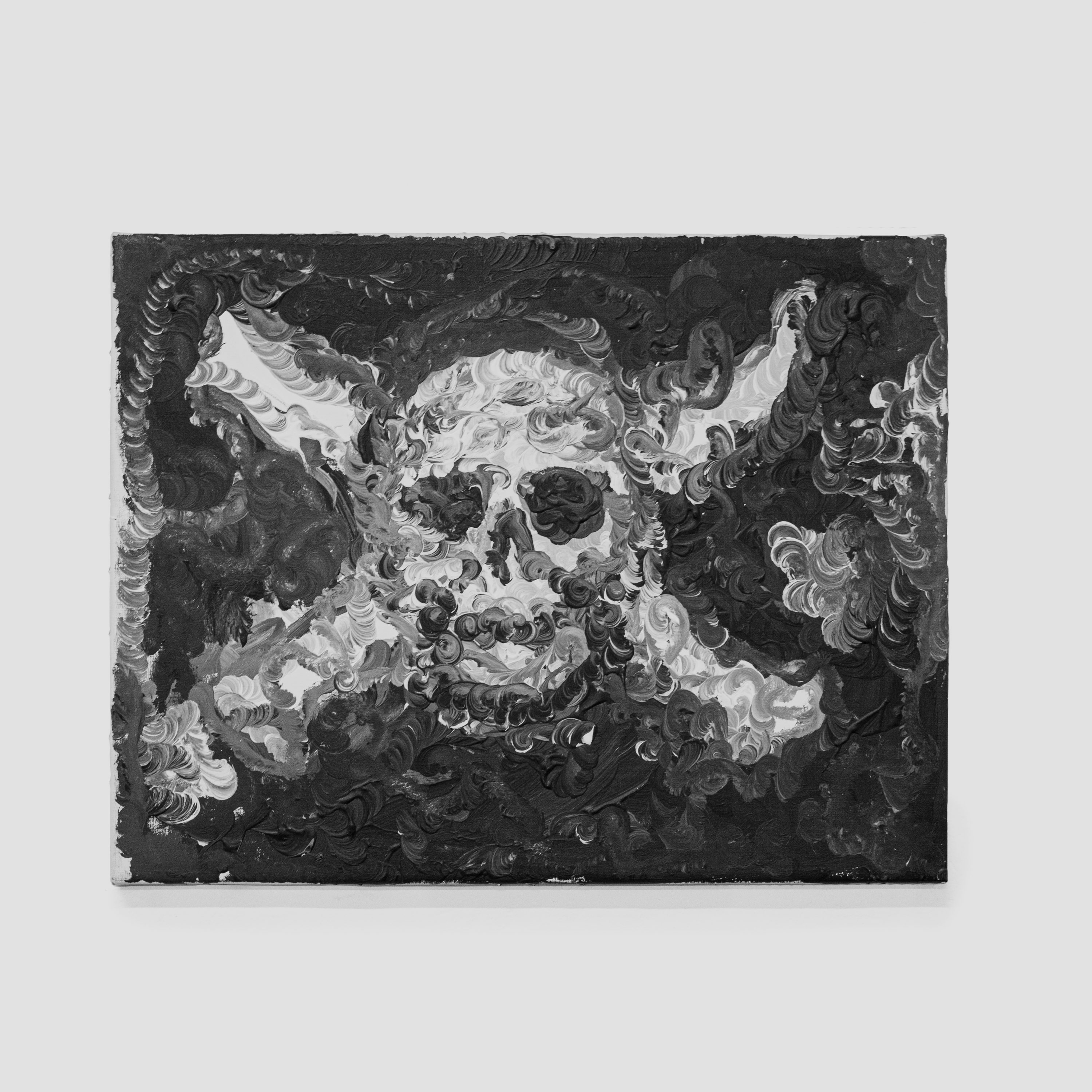
Troels Wörsel
Flags
October 2 – October 29, 2020
If the exhibited works had been household products, of the sort you keep at the back of your cupboard, their figurative message would have been unmistakable: acutely toxic – swallow me and die. In this context, luckily enough, the only way of being exposed to Troels Wörsel’s black and white acrylic paintings is by absorbing them through your eyes. You are not risking your life here – unless you trip on the stairs of the gallery space and land, head first, on the concrete floor. If, on the other hand, your gross motor skills are good and you move closer to the motifs and the pictorial substance that generated them, the two components begin to merge like a turbulent sheet of water; thus creating a mirror that reflects light and distorts the depths at the same time. Lying here are the sunken death’s heads and their symbols. If they were in fact to represent some kind of warning, it might be something like: this far and no further!
The exhibition has no beginning and no end, merely extreme points constituted by the walls of the space. The six pirate flags hijack and deplete each other’s visual sovereignty. Together they form a self-reflective statement – a humorous comment on the appropriation and the anarchist connotations of the flag. The more you look at the same motif in its various guises, the more meaningless it becomes. But the sensation of emptiness may actually be a much-needed zero point where a renewed concentration on the paintings begins to take shape. As with a mantra for meditation there is something ritual but informal about the execution of Wörsel’s series of flags. His brush, mounted on an electric drill, has a sing-song and monotonous effect. Routine-bound, yet skilful like a window cleaner, the acrylic paint has been pushed around on the surface of the canvas ’alla prima’.
The circular brushwork twists in and out of the foreground of the picture plane. The grinning skulls seem to have been called forth from a mist and to be on the point of disappearing into it again. “To be, or not to be”, that is the question that the viewer must ask him-/herself. For just as in the famous words from Hamlet’s soliloquy, there is a symmetry underpinned by contradictions in Wörsel’s works, too. An evenly matched tug of war between high- and lowbrow annexation. Whether it is then a matter of life or death depends on the eye of the beholder; for, ultimately, a flag constitutes a mirror reflecting our own projections.
“He who laughs last, laughs best” is another famous theatrical speech dating from the English Renaissance. A bittersweet expression that became an Anglican law of karma and a set phrase. There are thus several elements in the works at the Flags exhibition that seem to run in circles. The six pirate flags on the walls of the gallery form a straight line as well as a closed curve. Thematically the paintings revolve around themselves, and as a viewer you have no choice but to keep up or start all over again.
– Andreas Albrectsen, 2020.
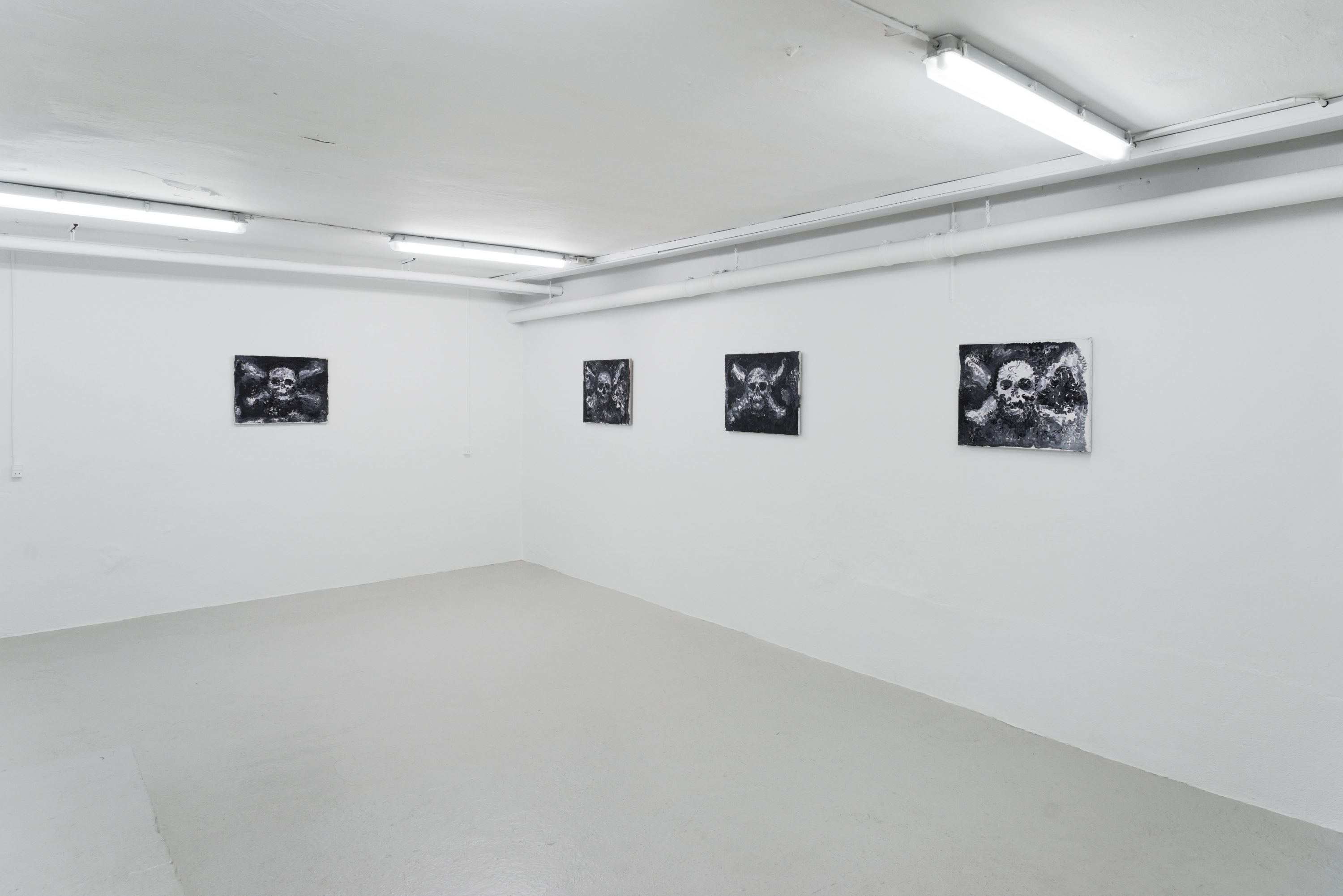
Troels Wörsel. Flags. October 2020. Photo by Brian Kure 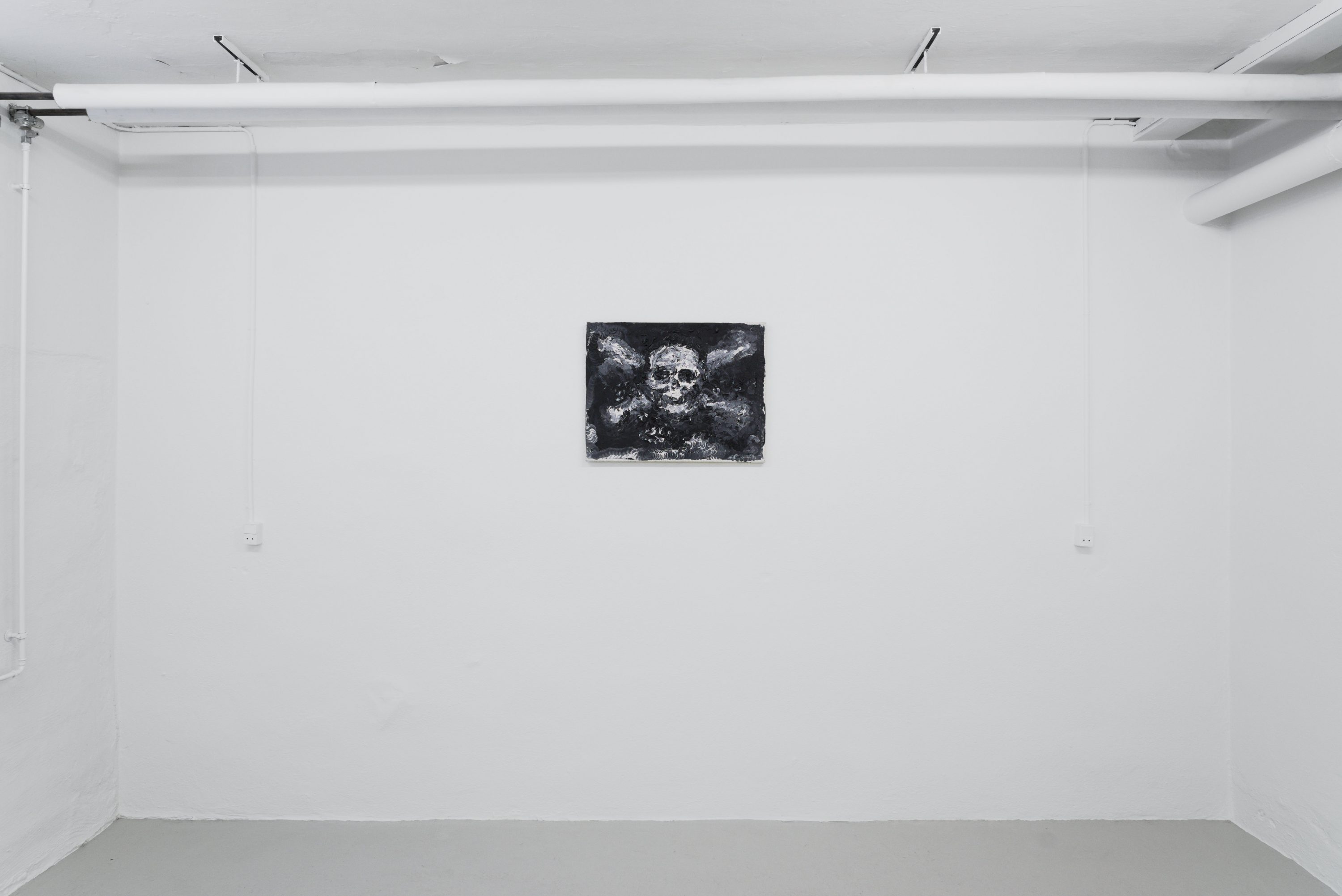
Troels Wörsel. Flags. October 2020. Photo by Brian Kure 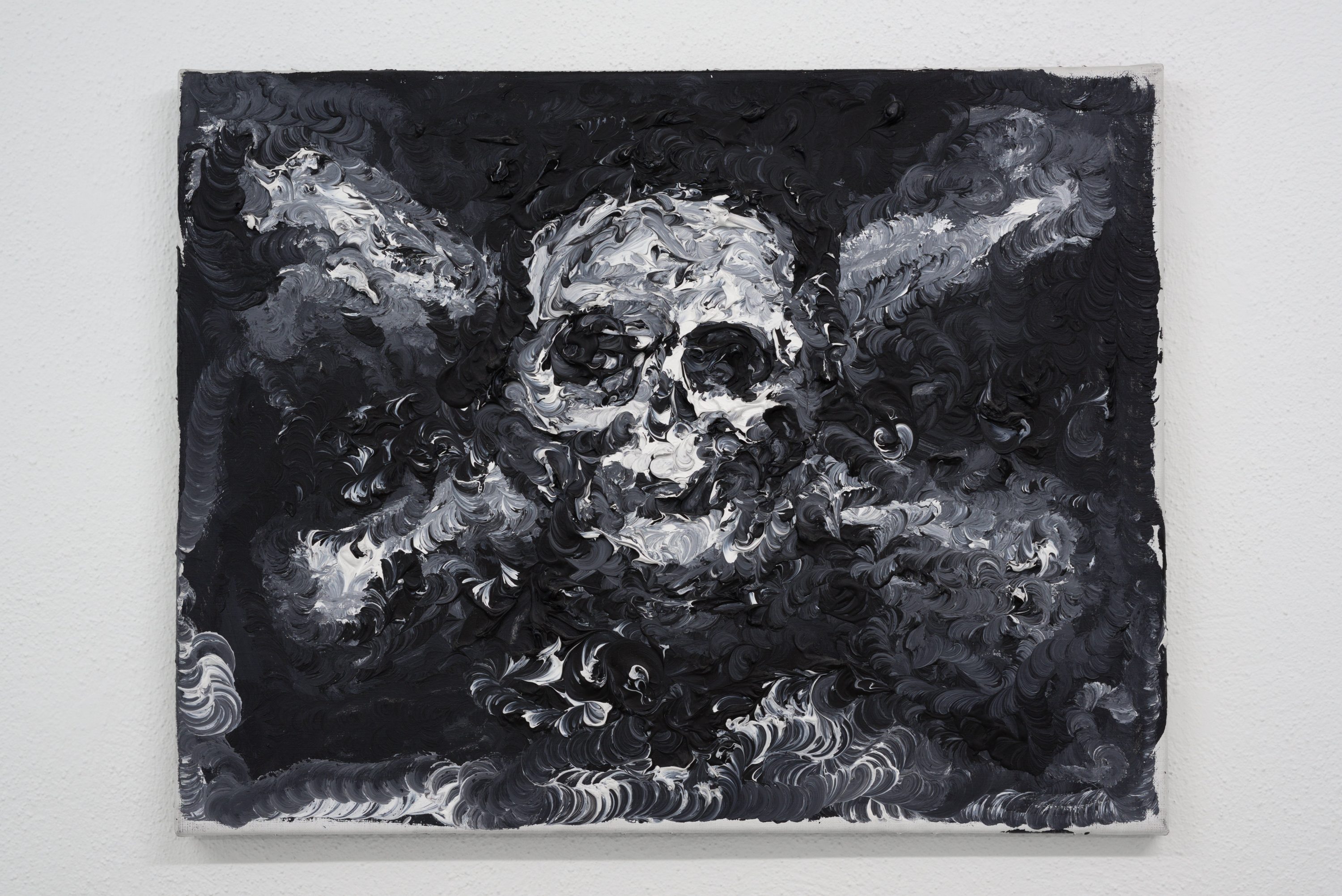
Troels Wörsel. Flag, 1987. Acrylic on canvas. 50 x 65 cm. Private Collection 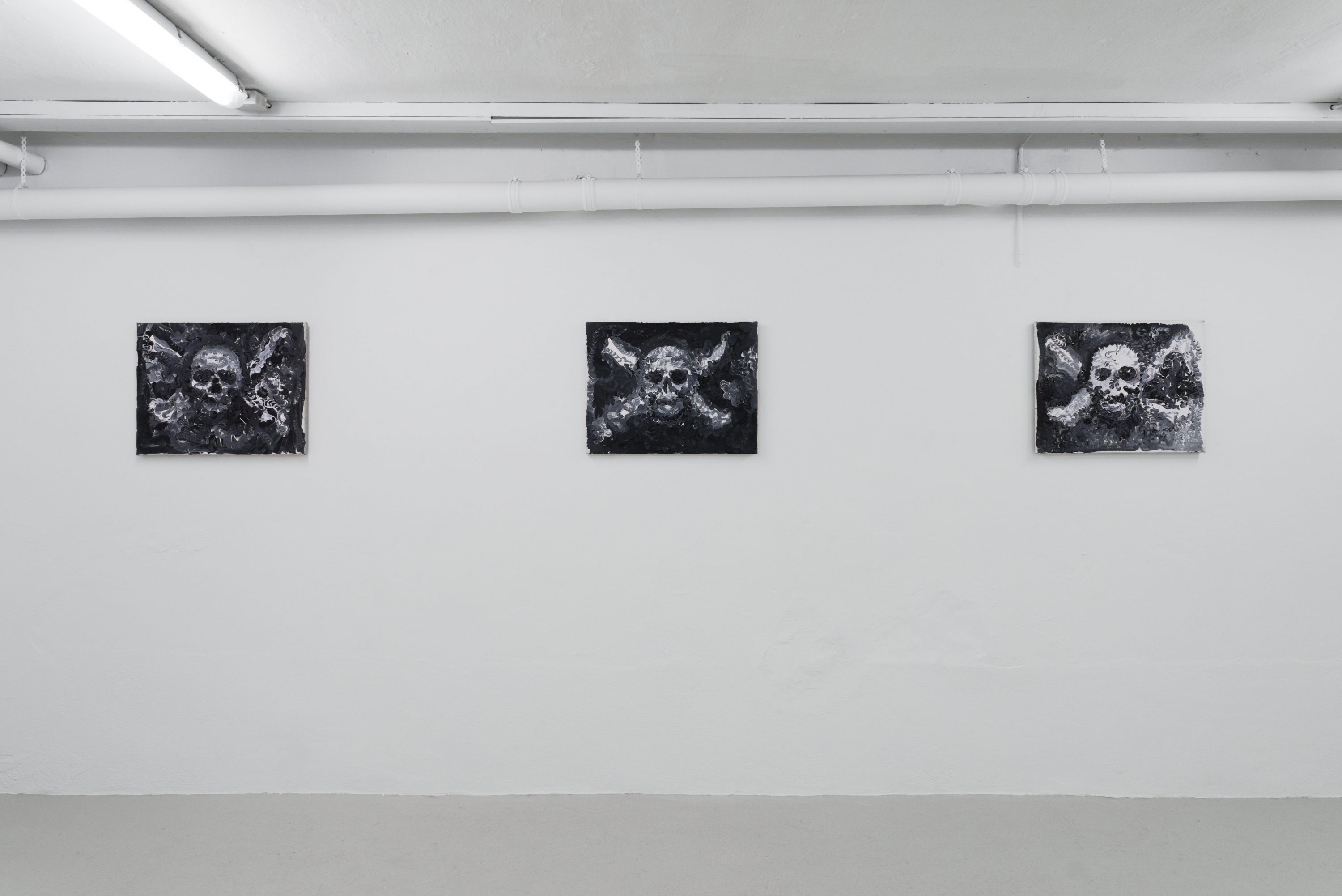
Troels Wörsel. Flags. October 2020. Photo by Brian Kure 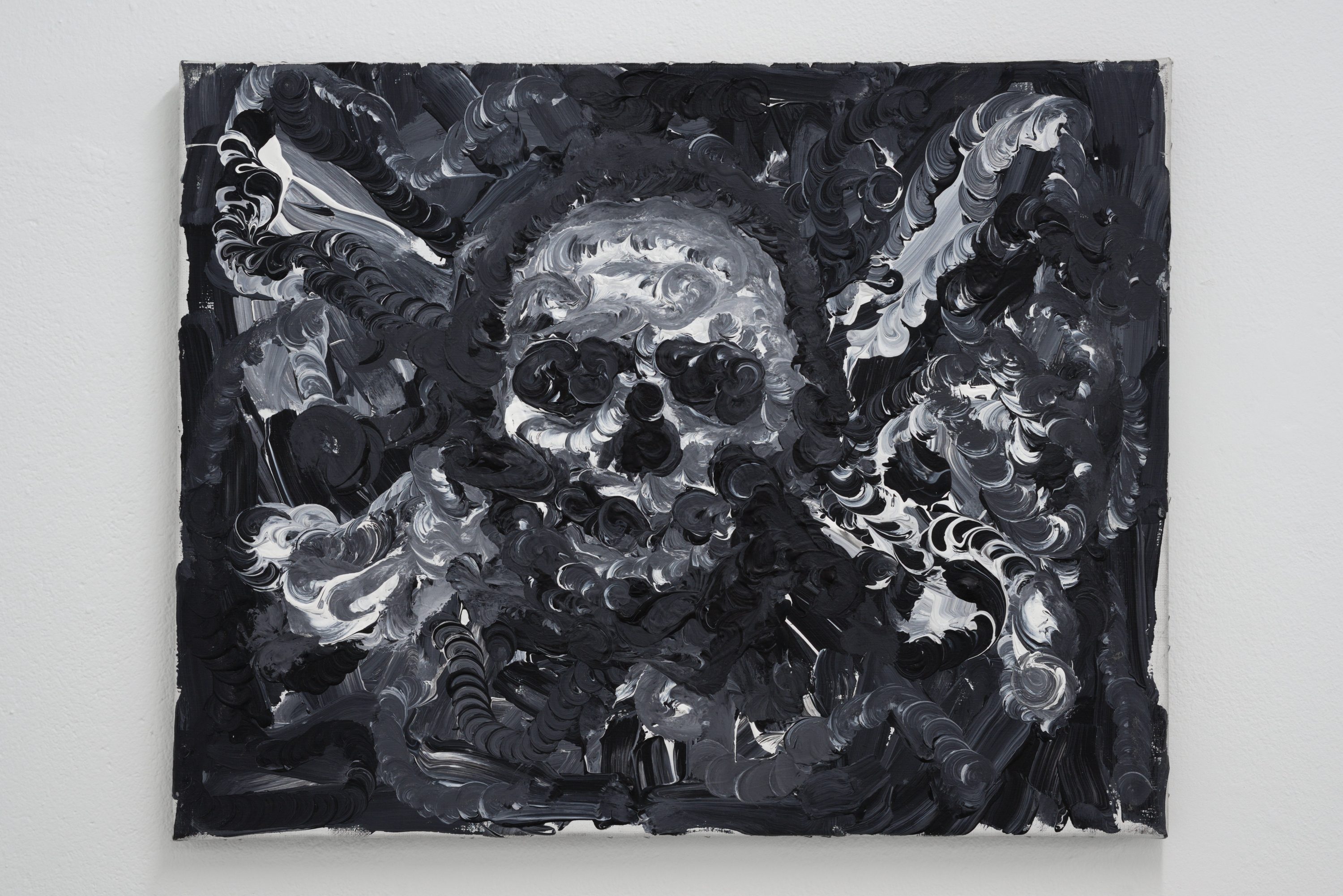
Troels Wörsel. Flag, 1987. Acrylic on canvas. 50 x 65 cm. Courtesy of Galleri Susanne Ottesen 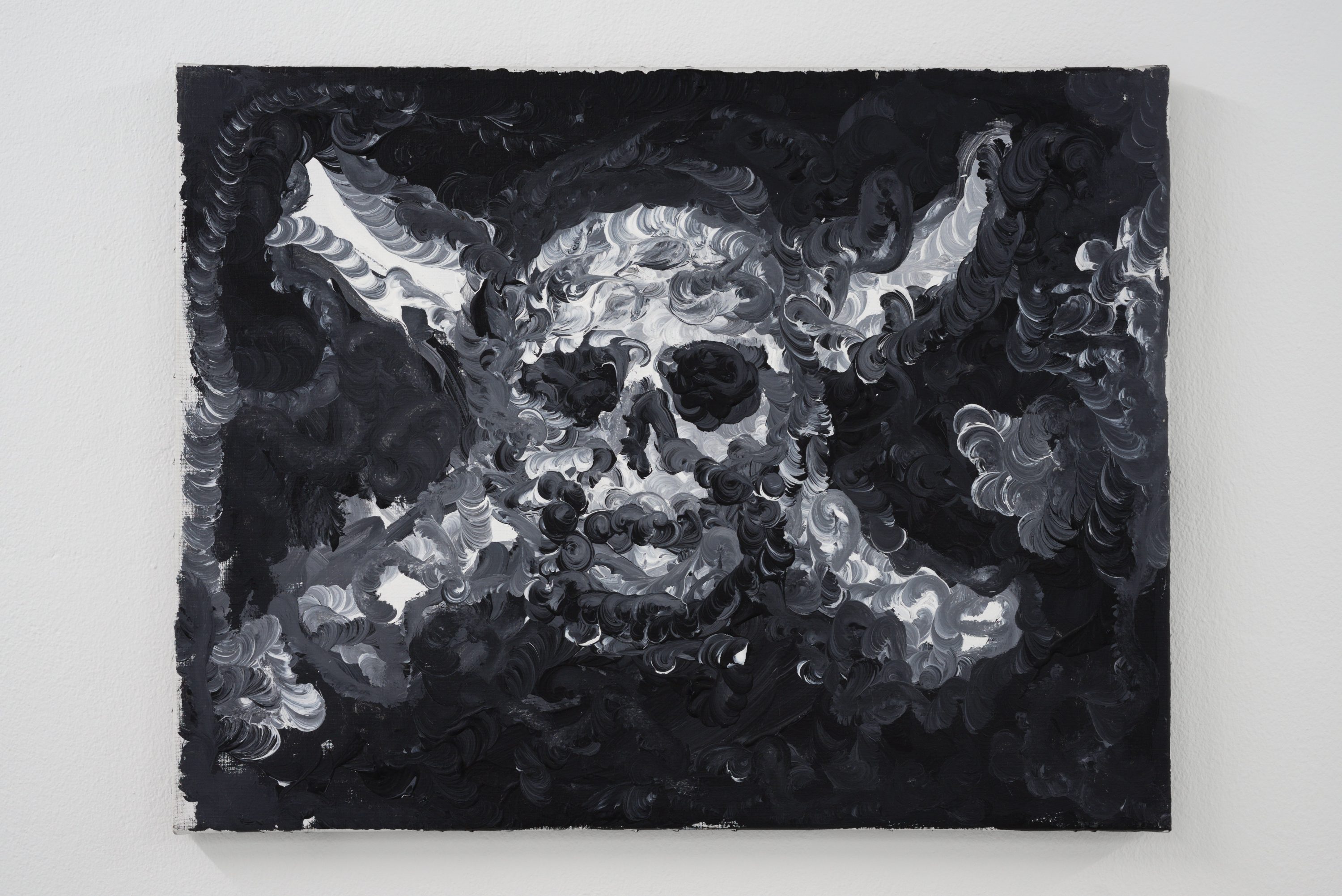
Troels Wörsel. Flag, 1987. Acrylic on canvas. 50 x 65 cm. Private Collection 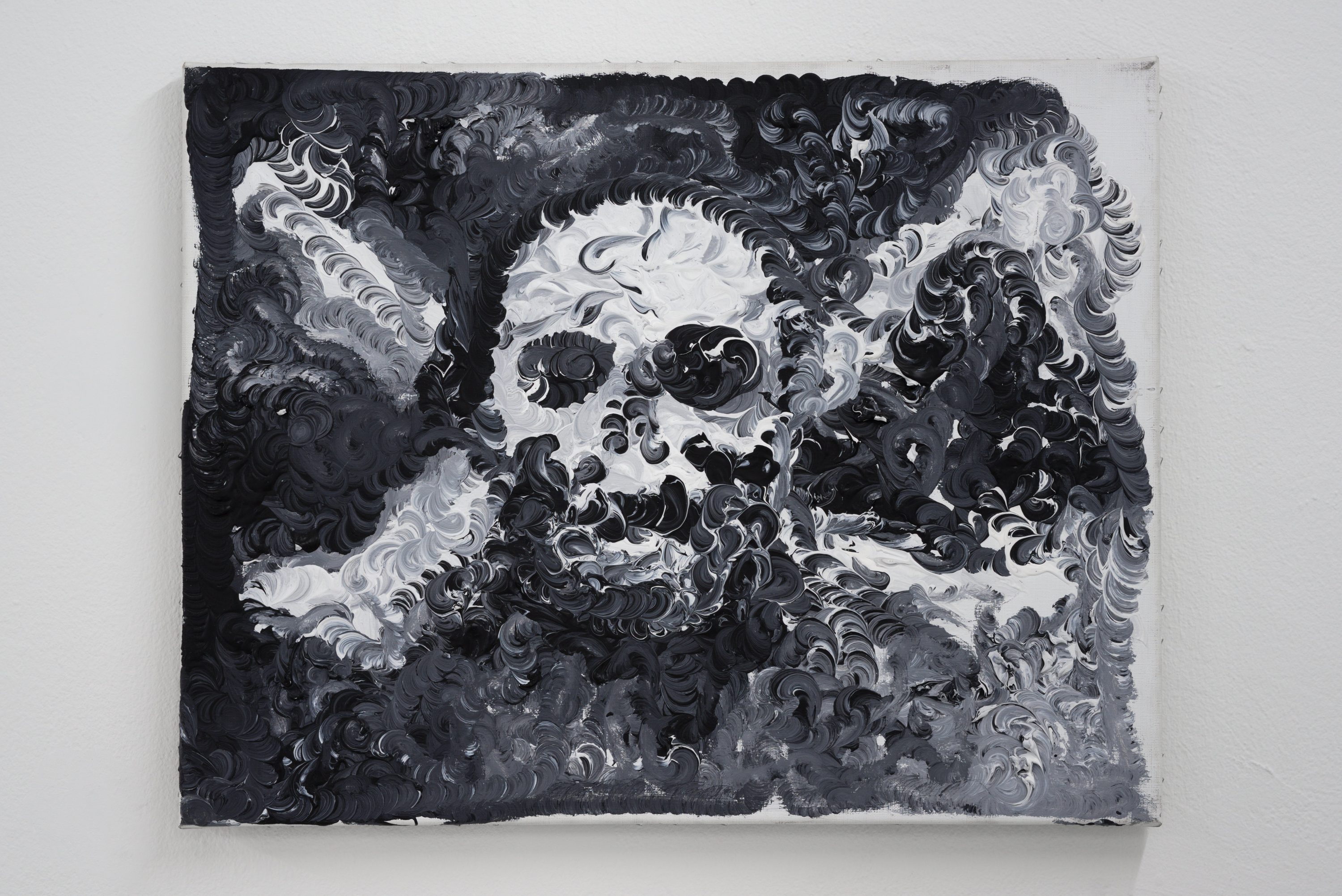
Troels Wörsel. Flag, 1987. Acrylic on canvas. 50 x 65 cm. Private Collection 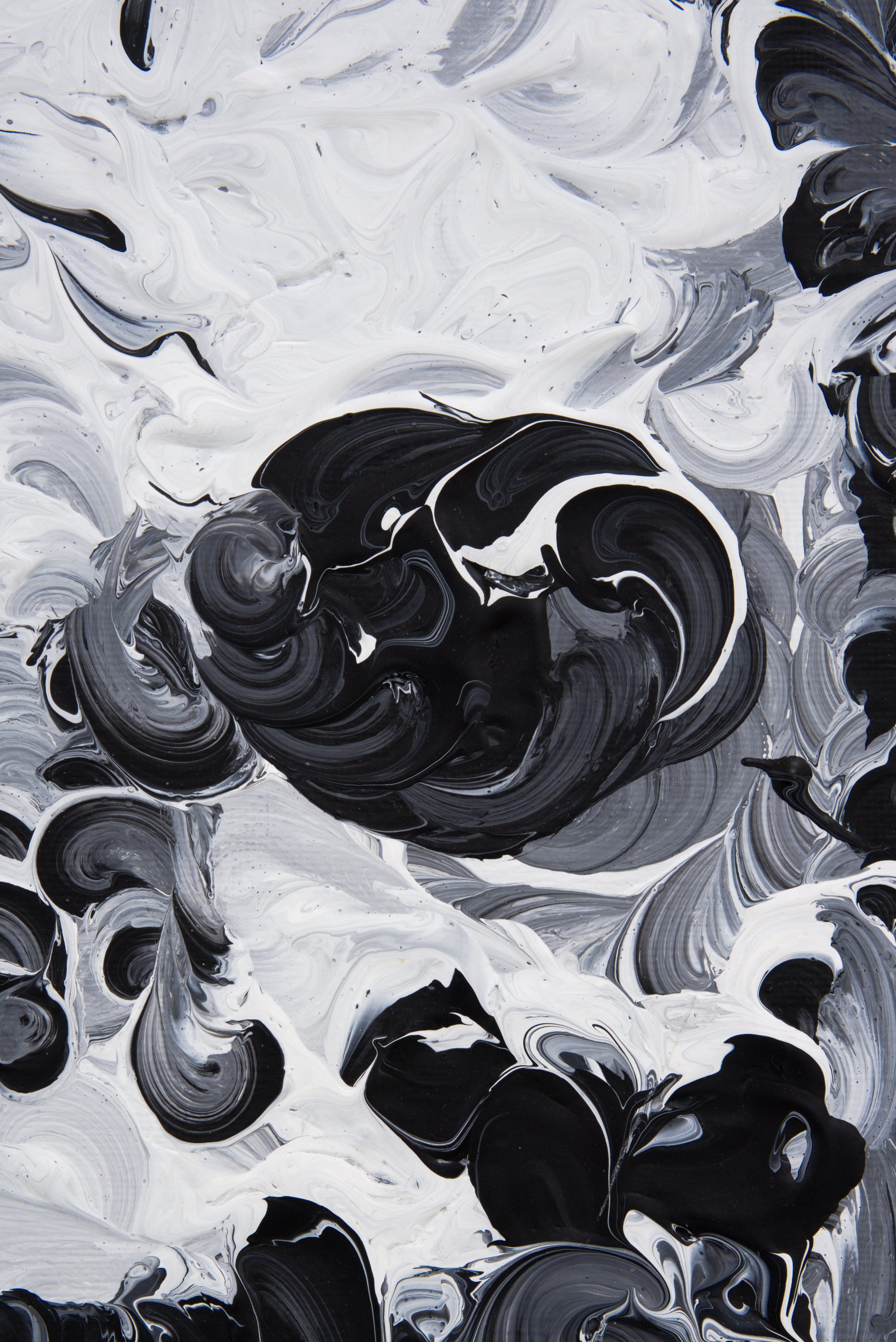
Troels Wörsel. Flag, 1987. Acrylic on canvas. 50 x 65 cm. (Detail) 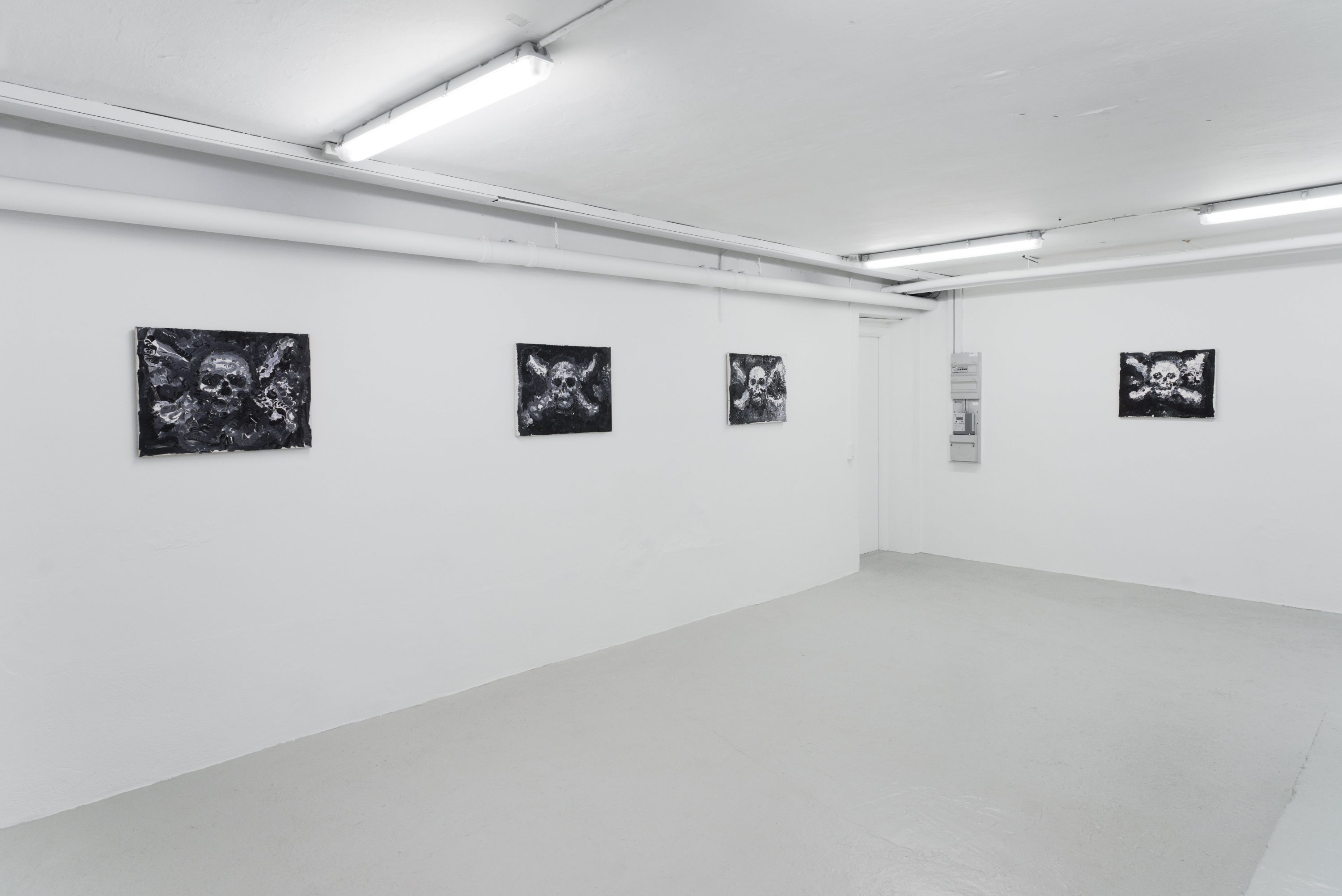
Troels Wörsel. Flags. October 2020. Photo by Brian Kure 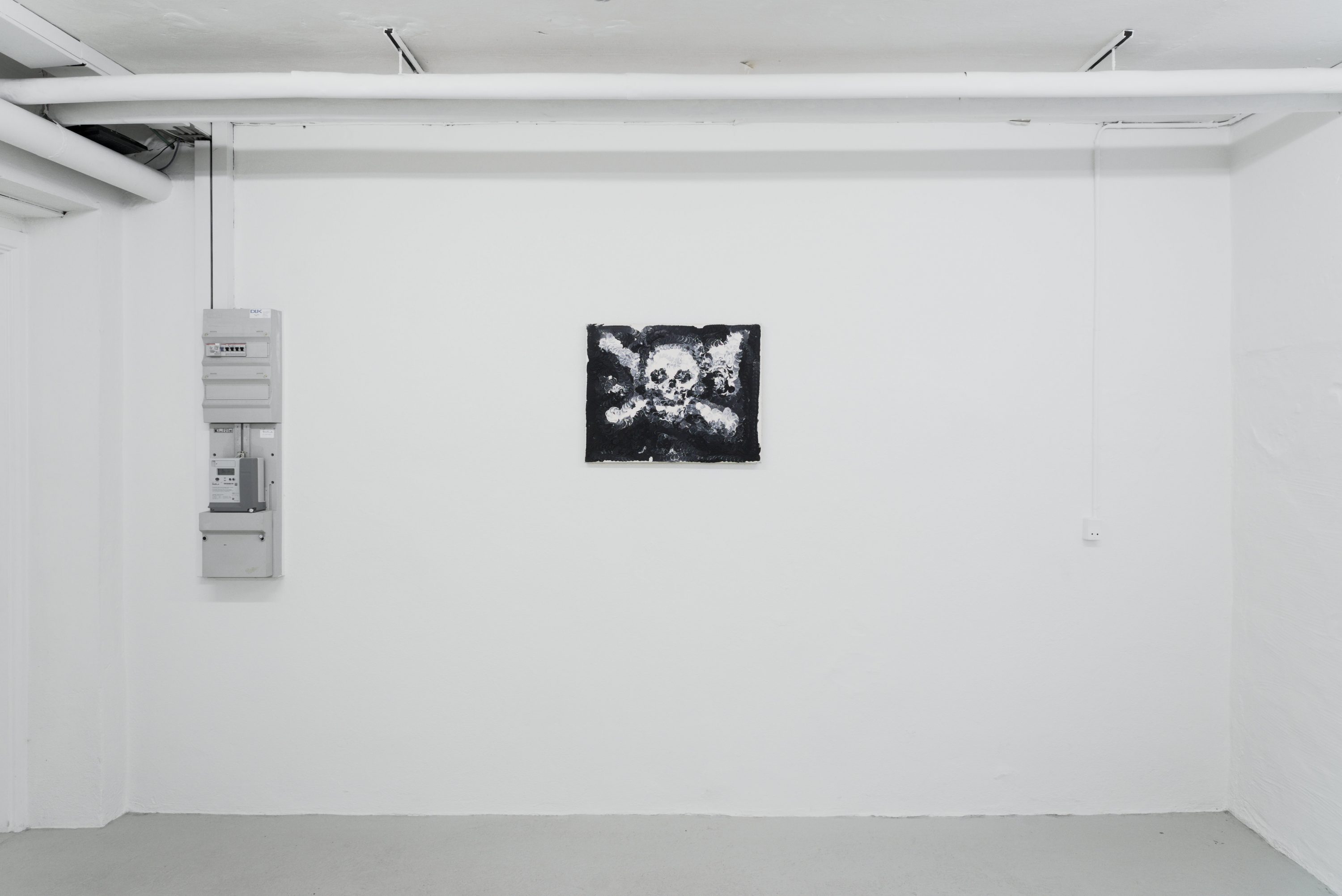
Troels Wörsel. Flags. October 2020. Photo by Brian Kure 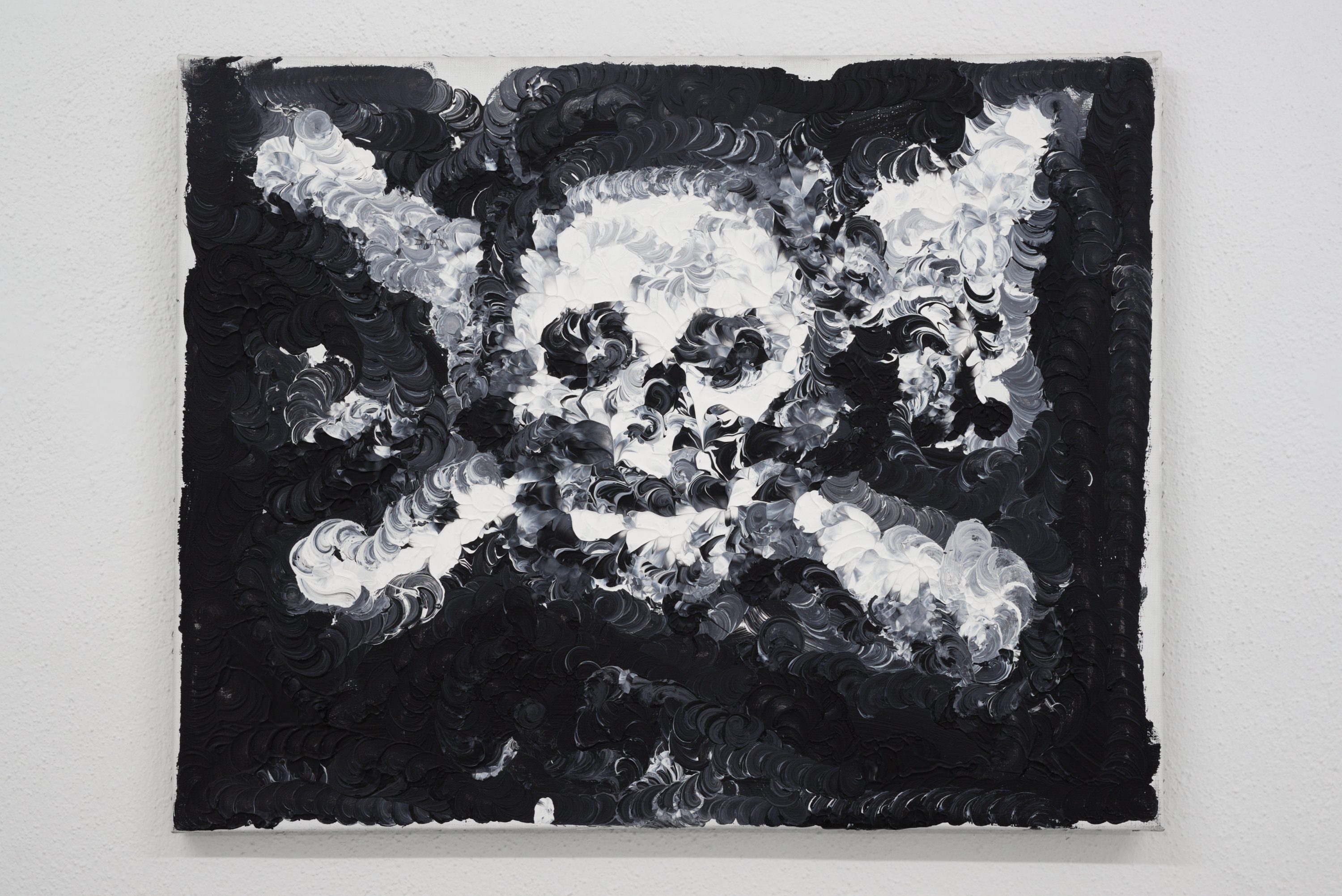
Troels Wörsel. Flag, 1987. Acrylic on canvas. 50 x 65 cm. Courtesy of Galleri Susanne Ottesen 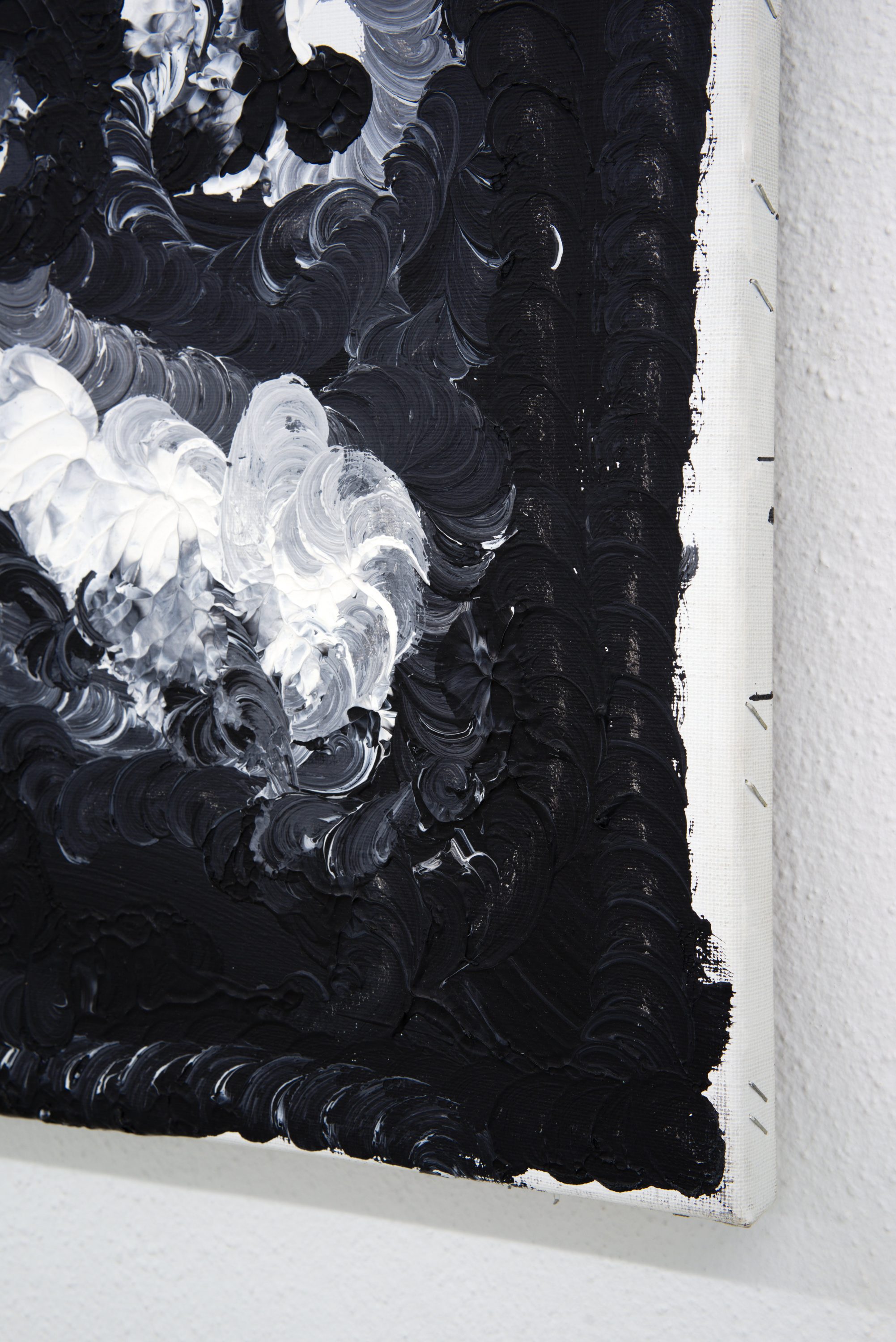
Troels Wörsel. Flag, 1987. Acrylic on canvas. 50 x 65 cm. (Detail) 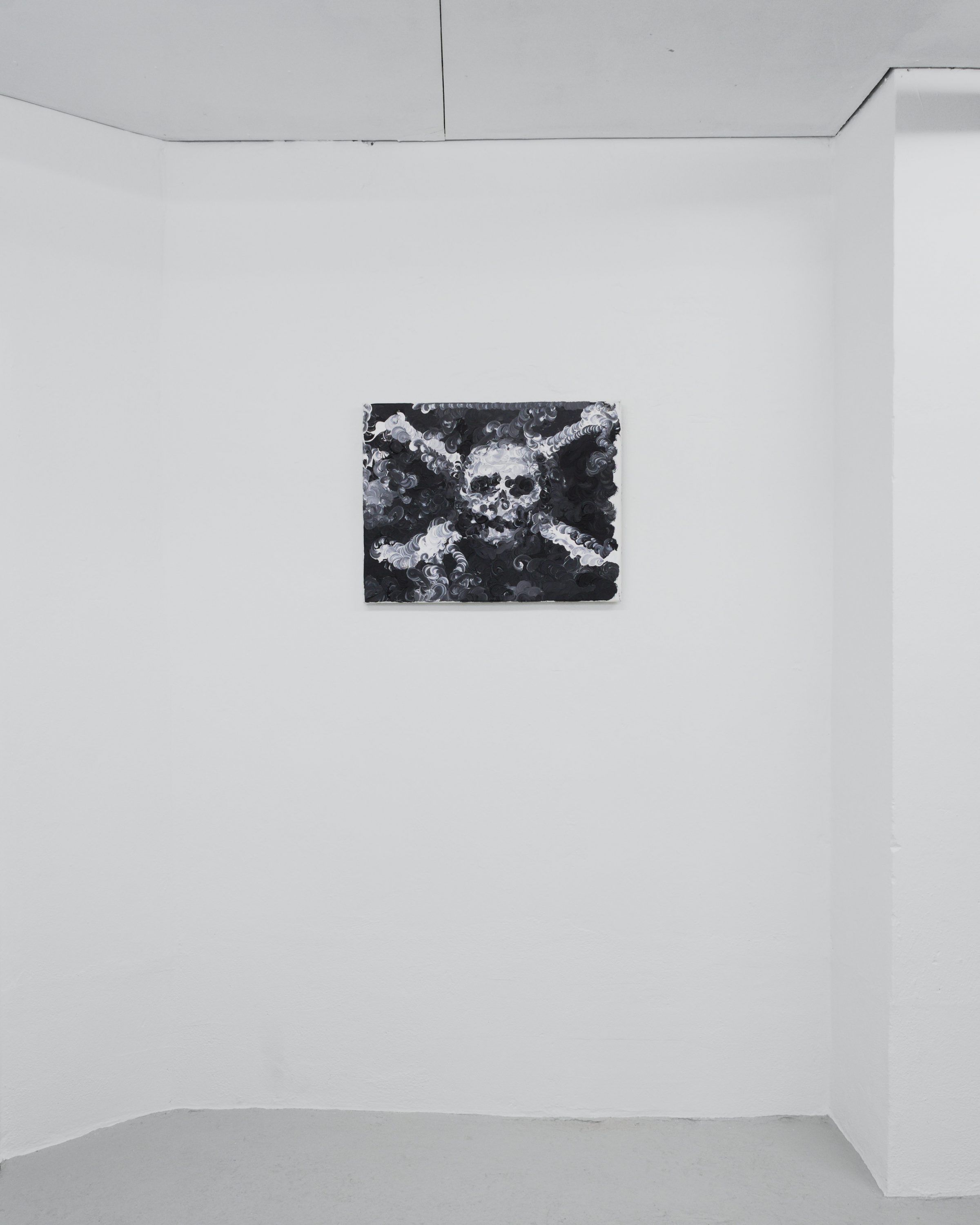
Troels Wörsel. Flags. October 2020. Photo by Brian Kure 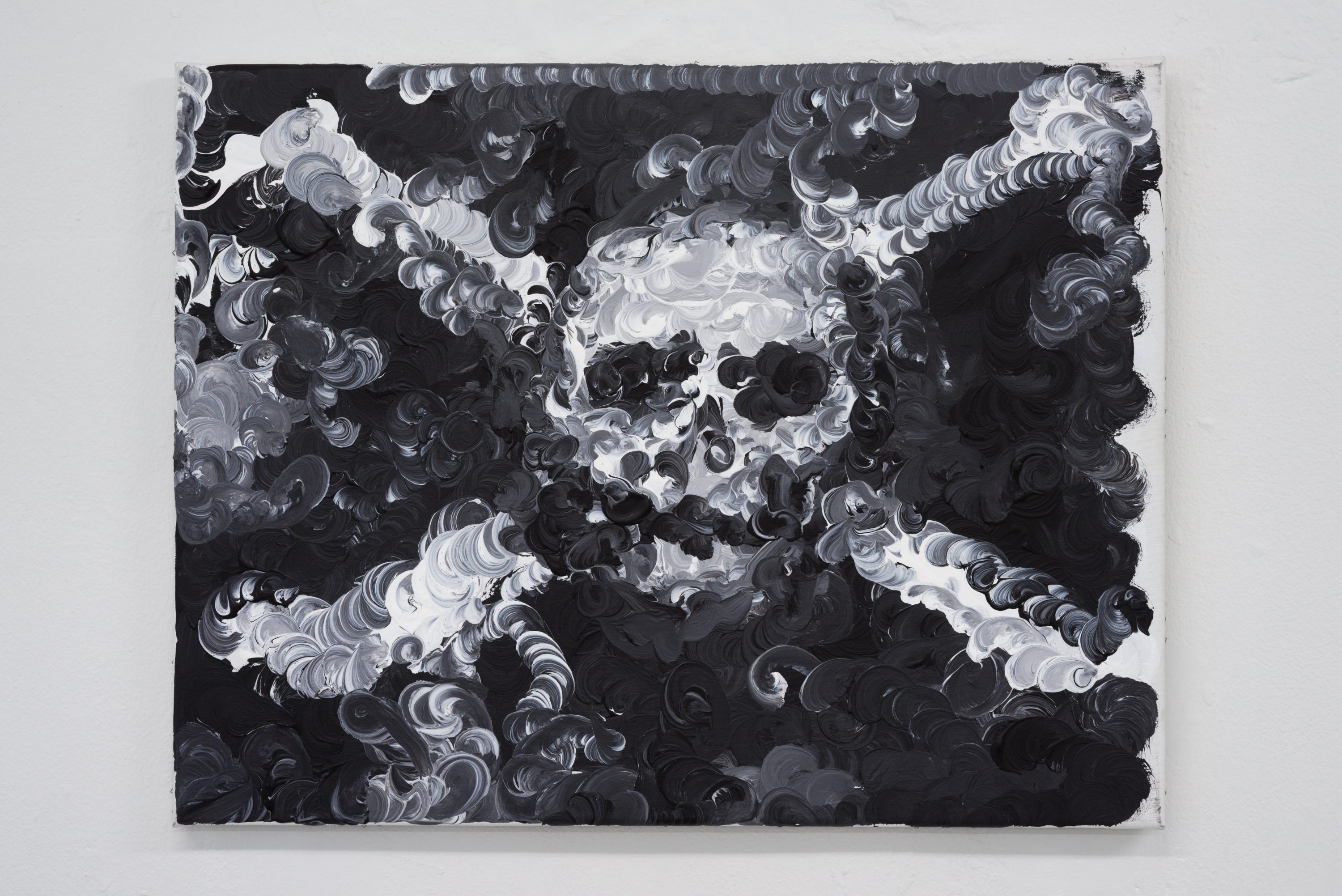
Troels Wörsel. Flag, 2014. Acrylic on canvas. 50 x 65 cm. Courtesy of Galleri Susanne Ottesen